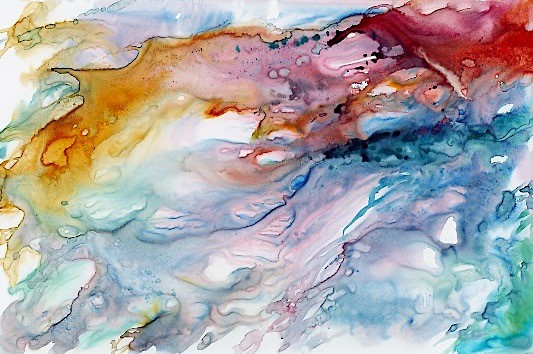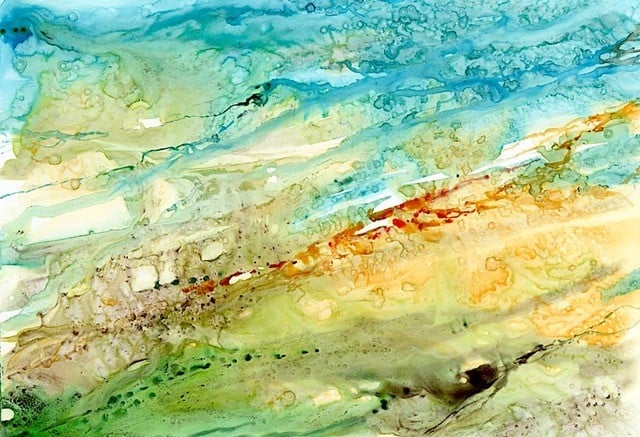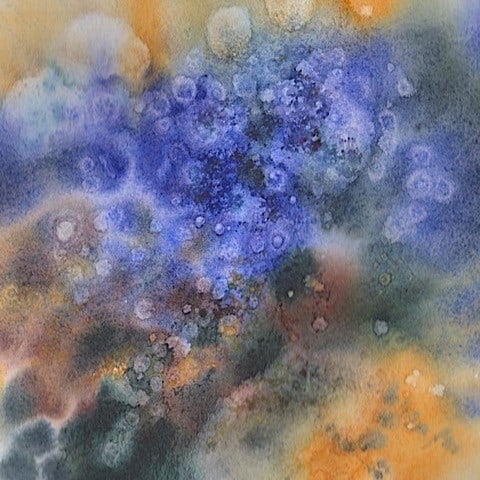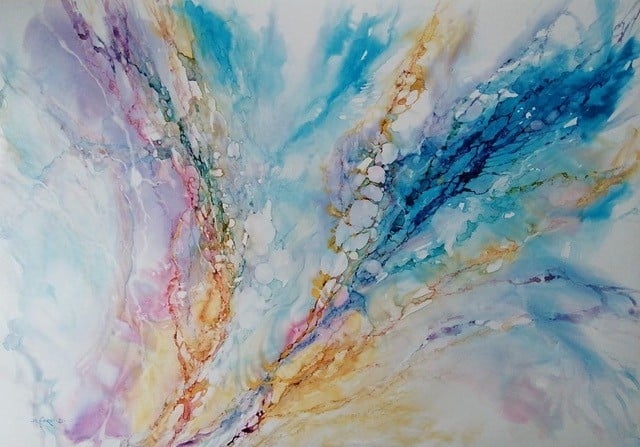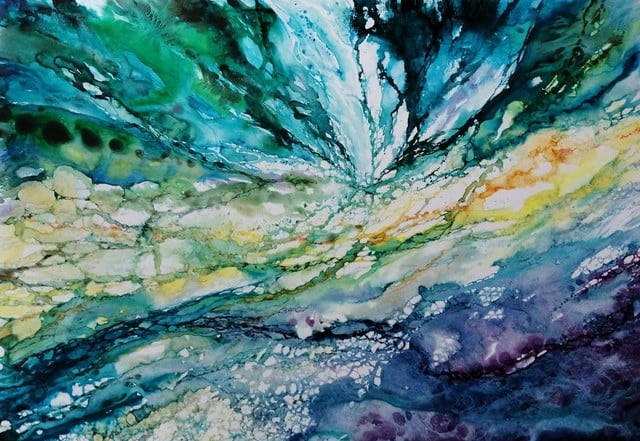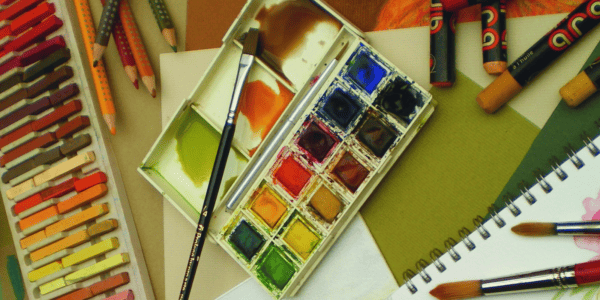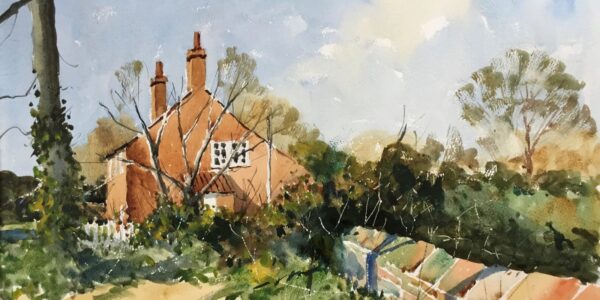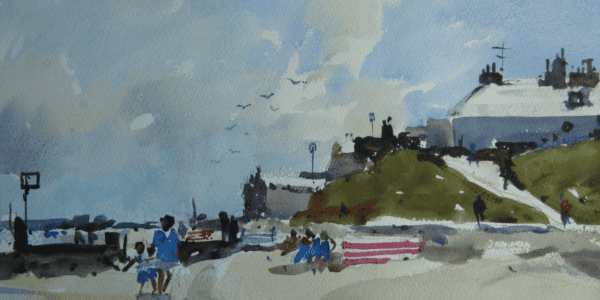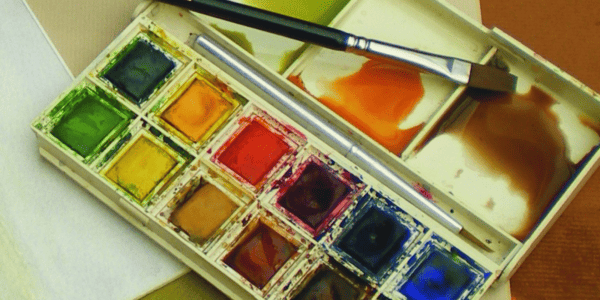This experimental, non-figurative watercolour course is designed to free the painter from any preconceived ideas of acceptability, success and failure, and go with the flow of colour, feeling, and emotion.
Using numerous watercolour techniques, materials, and approaches, we will quite simply have fun with paint!
No painting experience necessary.
Tutor: Jeremy Ford
Jeremy studied Graphic Design at Southport College of Art, (1972-5) and Illustration at Harrow College of Art, London (1975-8) A professional artist and Illustrator since then, working on a wide variety of books, magazines, and greeting cards. Instructional watercolour, pastel, and gouache art books published by Search Press. Work commissioned by The Royal Horticultural Society, Bradford Exchange Limited Edition Plates, and American Express Travel Guides, amongst many others. DVDs on painting in watercolour, pastel, and gouache and has contributed to numerous art books. In regular demand as a teacher and demonstrator and has a Certificate in Education (Post 16.) Demonstrates painting at many popular art events, working in all paint media. Demonstrated for St. Cuthbert's Paper Mill, (makers of Bockingford and Saunders Waterford watercolour papers) previously Senior Tutor and Principal UK Demonstrator for the Michael Wilcox School of Colour. Professional Associate and Former President of the S.A.A.Please also see The Art of Gouache 5-8 August, Landscape and Nature in Watercolour 8-12 August. Book 2 Jeremy Ford Classes and receive a 10% discount. PLease contact Slapton Ley directly to get this offer.
What's Included
Before You Attend
Where to meet and at what time?
Resident participants are requested to arrive for registration by 17.00 on arrival day. The course will begin after supper on arrival day. Non residents can arrive 10/15 mins before course start time. There will be an introductory talk at 17.00. Supper is usually at 18.30. A non resident booking also includes dinner during your course as teaching does progress into the evening. Breakfast, for resident participants, will be from 8:00am. The course will end on Sunday at 16.00. On the final day please vacate your room by 9:00am, storage is provided for your luggage.
What to bring?
- Please bring the colours you are familiar with, you don't have to use the same colours as the tutor. If you are considering buying artists quality colours then the recommend the following tubes or pans: Ultramarine, (sometimes called French Ultramarine) Phthalocyanine Blue (sometimes abbreviated to Phthalo Blue. N.B. Winsor & Newton call it Winsor Blue Green Shade, or Intense Blue. Daler-Rowney call it Phthalo Blue (Green Shade) Prussian Blueis similar but duller and will do if necessary) Cerulean Blue, Cadmium Red Light or Cadmium Red Pale, or Vermillion. Cadmium Red, which is slightly darker will do. Permanent Rose, (Quinacridone Violet is the same, as is Quinacridone Rose) Alizarin Crimson will do but like Rose Madder and Carmine it is darker and duller. Cadmium Yellow or Cadmium Yellow Light, or Cadmium Yellow Pale. Lemon Yellow (but NOT Lemon Yellow Nickel Titanate) or Hansa Yellow Light, or Winsor Yellow, or Winsor Lemon. Burnt Sienna. Burnt Umber or Sepia, Quinacridone Gold and/or Raw Sienna and/or Yellow Ochre (Not essential but useful). Phthalocyanine Green (sometimes abbreviated to Phthalo Green. Winsor & Newton call it Winsor Green Blue Shade. Viridian or Emerald Green will do. Permanent White gouache might be handy but isn't essential.
- A B and/or 2B pencil, an eraser, water containers, plastic water bottle.
- Watercolour sketchbook, Cartridge sketchbook; whatever size you like working. I work mostly on quarter-imperial, A3, A4 and slightly smaller. Bulldog clips, elastic bands or Masking tape to hold corners down. If you prefer to work on prepared stretched paper with gum-strip and a board be prepared, otherwise stick to sketchbooks which is my preference for outdoor work. I will have some papers for sale.
- An assortment of brushes, -suggest 1, 3, 6, 8, 10, -bigger if required. Perhaps a small rigger or linerwriter. (I have brushes and paper for sale if necessary).
- An easel and a portable lightweight chair are useful if working outdoors, although some people are happy working on their knee without the use of an easel.
Sorry this course has ended

